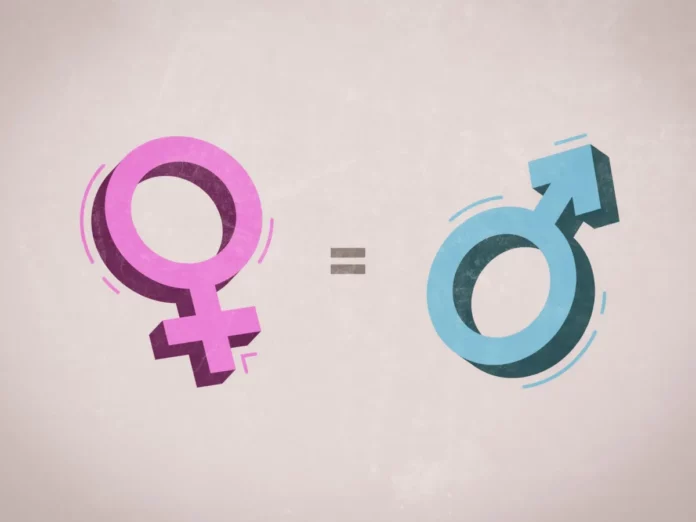Understanding the intricate relationship between feminism and patriarchy necessitates an exploration of foundational definitions and implications of each doctrine. At its core, feminism advocates for equality across genders, challenging systemic inequities and societal norms that favor patriarchal structures. Conversely, patriarchy establishes a hierarchy that privileges men and subordinates women and non-binary individuals. This dichotomy invites an inquiry into their distinguishing characteristics, revealing profound and often contentious implications.
Feminism is not a monolithic entity; rather, it encompasses a diversity of ideologies that advocate for women’s rights and broader gender equality. These feminist perspectives range from liberal feminism, focused on legal and political equality, to radical feminism, which critiques patriarchy as an inherently oppressive societal system. Intersectional feminism further complicates this narrative by integrating the experiences of individuals across various socioeconomic, racial, and cultural contexts, illustrating how overlapping identities influence one’s experience of oppression.
On the contrary, patriarchy functions as a social system wherein men hold primary power, manifesting in various institutions—politically, socially, and economically. It deeply permeates cultural norms, influencing everything from familial structures to workplace dynamics. Thus, while feminism challenges the inherent inequalities propagated by patriarchy, the latter persists as a dominant force, often resisting reformative measures advocated by feminist movements.
Engendering a deeper understanding entails a critical examination of the ways feminist ideologies confront patriarchy at various levels. To elucidate this complex relationship, let us delve into the ideology and objectives of feminism, the inherent hierarchical structures of patriarchy, and the implications for societal advancement.
Examining Feminist Ideologies: A Spectrum of Liberation
Feminism’s multifaceted nature offers a robust critique of existing gender dynamics. Feminists argue that patriarchy systematically enforces gender roles, restricting the potential of all genders. The historical origins of feminism can be traced to the suffrage movements of the late 19th and early 20th centuries, where women’s rights advocates sought basic legal recognition and electoral rights. Since then, feminism has morphed to include issues such as reproductive rights, domestic violence, workplace equality, and sexual autonomy.
The key tenets of feminism challenge not only legal inequalities but also cultural narratives that uphold patriarchal values. For instance, a liberal feminist might seek reform within existing structures, advocating for equal pay and anti-discrimination laws. Meanwhile, radical feminists argue for a more profound transformation of society, positing that patriarchal societal norms are ingrained and require dismantling to achieve genuine equality. Such varied approaches highlight the richness of feminist discourse, illustrating that feminism does not merely aspire toward equality but also critiques the foundational structures that inhibit it.
Intersectionality serves as a vital lens through which contemporary feminism examines the variances of oppression. Coined by Kimberlé Crenshaw, intersectionality asserts that various facets of identity—including race, class, and sexuality—intersect to create unique experiences of discrimination. Acknowledging these intersecting identities allows feminist theorists to advocate for a more inclusive framework that transcends binary gender discussions, fostering a collective movement for liberation.
The Hierarchical Foundations of Patriarchy: A Systemic Overview
To grasp how patriarchy operates, one must recognize its structural dimensions. Patriarchy is not merely an individualistic mindset; it constitutes an elaborate system embedded within societal frameworks. It is evident in legal systems that perpetuate gender discrimination, cultural institutions that idealize male dominance, and economic structures that limit women’s participation in leadership roles.
Patriarchy manifests in various everyday scenarios—workplaces that perpetuate the glass ceiling, media representations that objectify women, and familial expectations that often relegate caregiving roles to women. Such systemic oppression is reinforced through collective societal beliefs and norms that prioritize masculinity as the norm, relegating femininity to an inferior status. These entrenched attitudes inhibit progress toward gender equality, prompting feminists to advocate for systemic change.
A poignant illustration of these dynamics can be found in the portrayal of women in media. Frequently, women are relegated to secondary roles, further entrenching the notion that their primary worth lies in their relationships with men. Feminist critiques urge society to reevaluate these patterns, advocating for diverse representations that challenge stereotype-driven narratives. By illuminating these patriarchal constructs, feminist movements aim to dismantle harmful biases that shape societal conceptions of gender roles.
The Clash of Feminism and Patriarchy: A Quest for Equity
The ongoing struggle between feminist advocacy and patriarchal resistance represents a critical juncture in societal evolution. Feminism espouses the vision of a just society where all genders experience equitable treatment and enjoy the freedom to define their identities without constraint. Contrarily, patriarchy seeks to uphold traditional gender roles that maintain the status quo, often responding to feminist movements with backlash and resistance, evidenced by anti-feminist sentiments and legislative rollbacks in once-settled rights.
Moreover, the contestations between these ideologies exemplify a larger cultural conflict over the meaning of gender and identity. As society grapples with these transformations, the importance of dialogue increases, for feminism provides essential frameworks for examining and understanding the complexities of power dynamics. It raises critical questions about freedom, autonomy, and the societal implications of gendered oppression, all while advocating for a more inclusive future.
The mantle of feminism extends beyond mere contestation; it comprises a collective call to action, compelling individuals to challenge ingrained societal norms actively. Awareness campaigns, educational initiatives, and grassroots activism illuminate the pervasive impact of patriarchy, inspiring both critical reflection and tangible action towards equity. In essence, feminism envisions a reimagining of power distributions, striving not for supremacy but for balance and inclusion across all identities.
In conclusion, feminism starkly contrasts with patriarchy, embracing the pursuit of equality against a backdrop of systemic inequality. While patriarchy consolidates power within a male-dominated framework, feminism seeks to dismantle these hierarchical structures, advocating for justice, equity, and inclusivity. The journey towards dismantling patriarchal norms requires persistence, dialogue, and an unwavering commitment to the ideals of feminism, acknowledging the multifaceted nature of oppression. Through continuous examination and activism, society can aim towards a horizon where gender equity is not merely aspirational but an achievable reality.





























